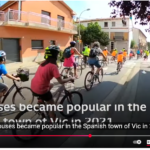 Americans call public spending that they don’t approve of "pork". Apparently the term comes from the idea of the government giving every voter a barrel of pork (smoked pork products were, at one time, shipped in barrels).
Americans call public spending that they don’t approve of "pork". Apparently the term comes from the idea of the government giving every voter a barrel of pork (smoked pork products were, at one time, shipped in barrels).
And by golly there is a lot of it here in the United States. This is partly because Congress has much more power over the budget than does the British House of Commons. The British system has a rule that only a Minister can propose increases in expenditure or taxation; it is for the House of Commons then to decide whether to grant the money needed. In the US, by contrast, Congress can insert additonal spending in almost any bill.
President Clinton was briefly given the power to veto particular items (the "line item veto"), and he used it 82 times in 1997 to delete unnecessary expenditures in 11 spending bills. The savings to taxpayers total nearly $2 billion over five years. But the Supreme Court struck down the line item veto in 1998, and now the President has to accept the pork inserted in the Budget by Congress, or send the whole thing back.
In August 2005, Congress passed, and President Bush approved, a transportation bill stuffed with pork. The bi-partisan pressure group Taxpayers for Common Sense identified 6,371 pieces of pork – at a cost of $24bn. These included $450m for two bridges in sparsely populated Alaska and $2.3m for landscaping along the Ronald Reagan highway in California. There was also funding for a snowmobile trail, a deer-avoidance system and something described as "dust control mitigation" on rural roads in Arkansas.
And that is why this porkbusters campaign is such a good idea: use the blogosphere to identify a comprehensive list of pork. Instapundit explains:
Identify some wasteful spending in your state or (even better) Congressional District. Put up a blog post on it. Go to N.Z. Bear’s new PorkBusters page and list the pork, and add a link to your post. Then call your Senators and Representative and ask them if they’re willing to support having that program cut or — failing that — what else they’re willing to cut in order to fund Katrina relief. (Be polite, identify yourself as a local blogger and let them know you’re going to post the response on your blog). Post the results. Then go back to NZ Bear’s page and post a link to your followup blog post. The result should be a pretty good resource of dubious spending, and Congressional comments thereon, for review by blogs, members of the media, etc. And maybe even members of Congress looking for wasteful spending.
Of course, one person’s pork is another person’s essential infrastructure project or welfare payment, and I’m not sure who will decide if each entry truly qualifies. We’ll have to see whether the quality of catalogue can be maintained. I’d be inclined to have a community voting system to determine which spending is the most egregiously porky.
In general, I’m an admirer of much of the United States’s system of government. But their inability to exert any sort of fiscal discipline is not an advertisement for their budget process. Perhaps the blogosphere can help to shed some light on the worst excesses and put pressure on Congress to do better?





One response to “Cutting the pork”
That bridge. UGH! Alaskans, for years, have been telling Don Young that we do not want it a bridge to nowhere! He didn’t listen to us and now it appears we’ll get the useless thing. We need better roads in our state, not bridges to land that will be bought up by developers intent on building fancy homes. Who is selling the land? Why, other rich Repukes! Sheesh. I’d like to ‘line item’ Young and his kind right out of office. Our system stinks in the USA. The working poor are paying for everything, in one way or another, and getting less and less back.